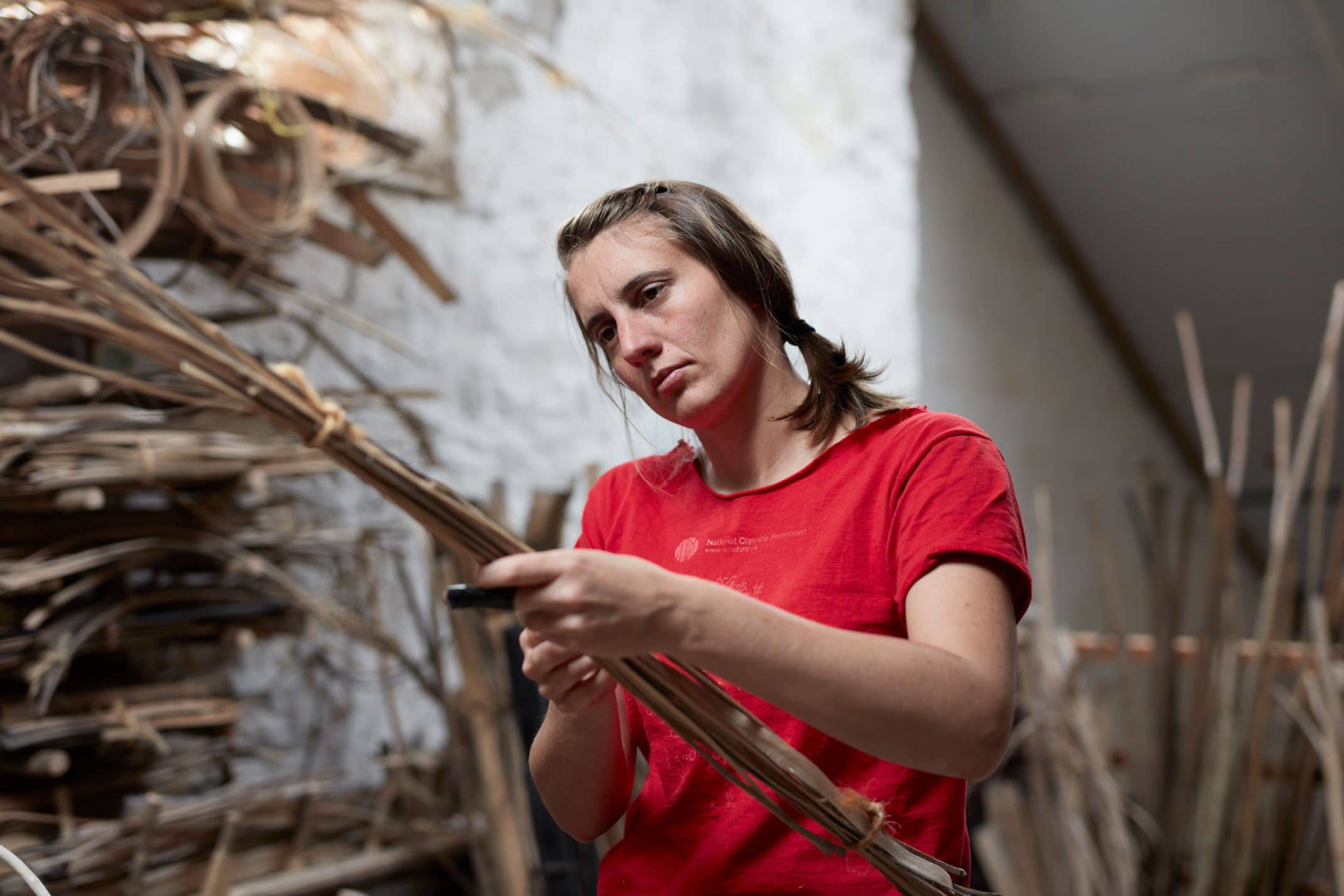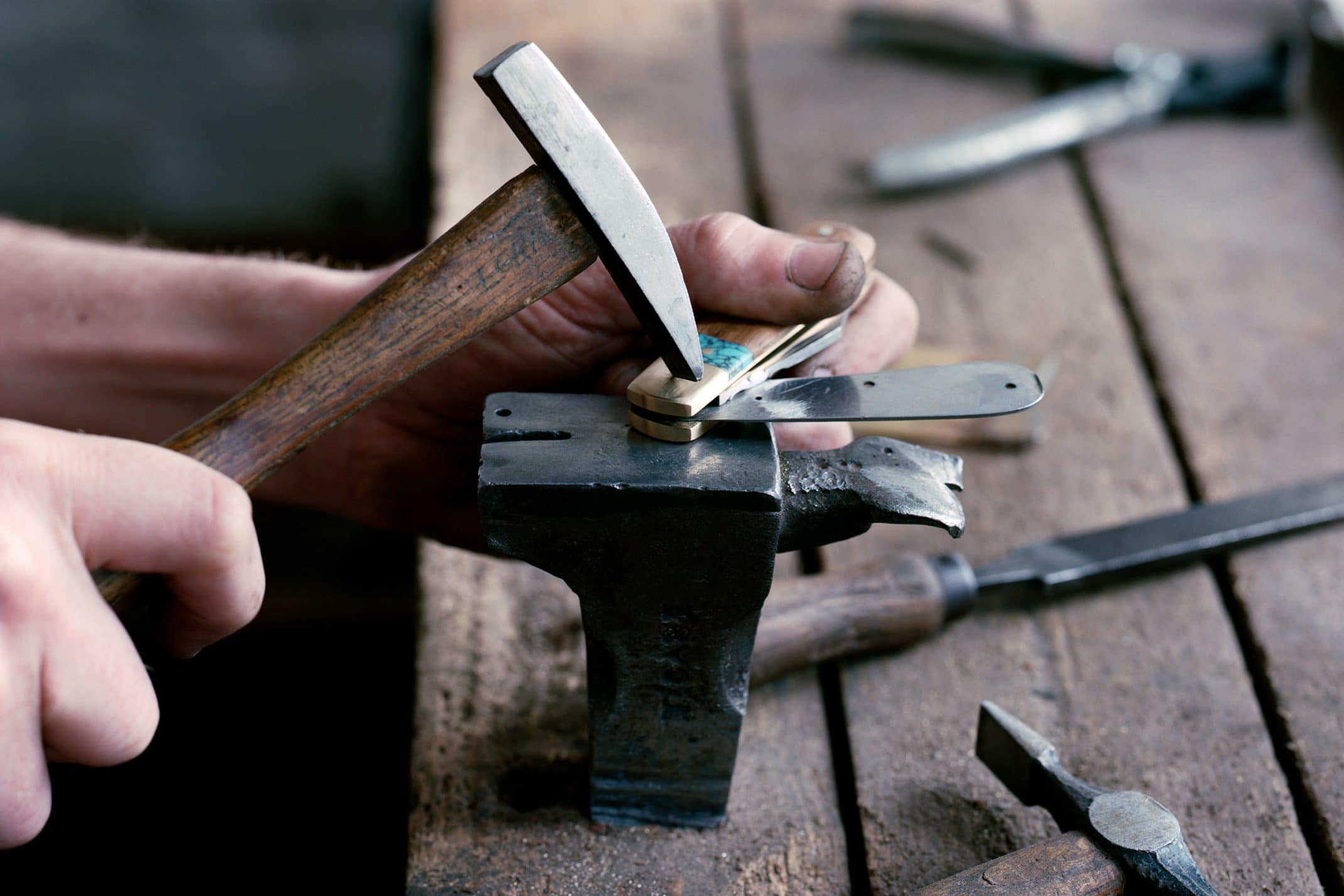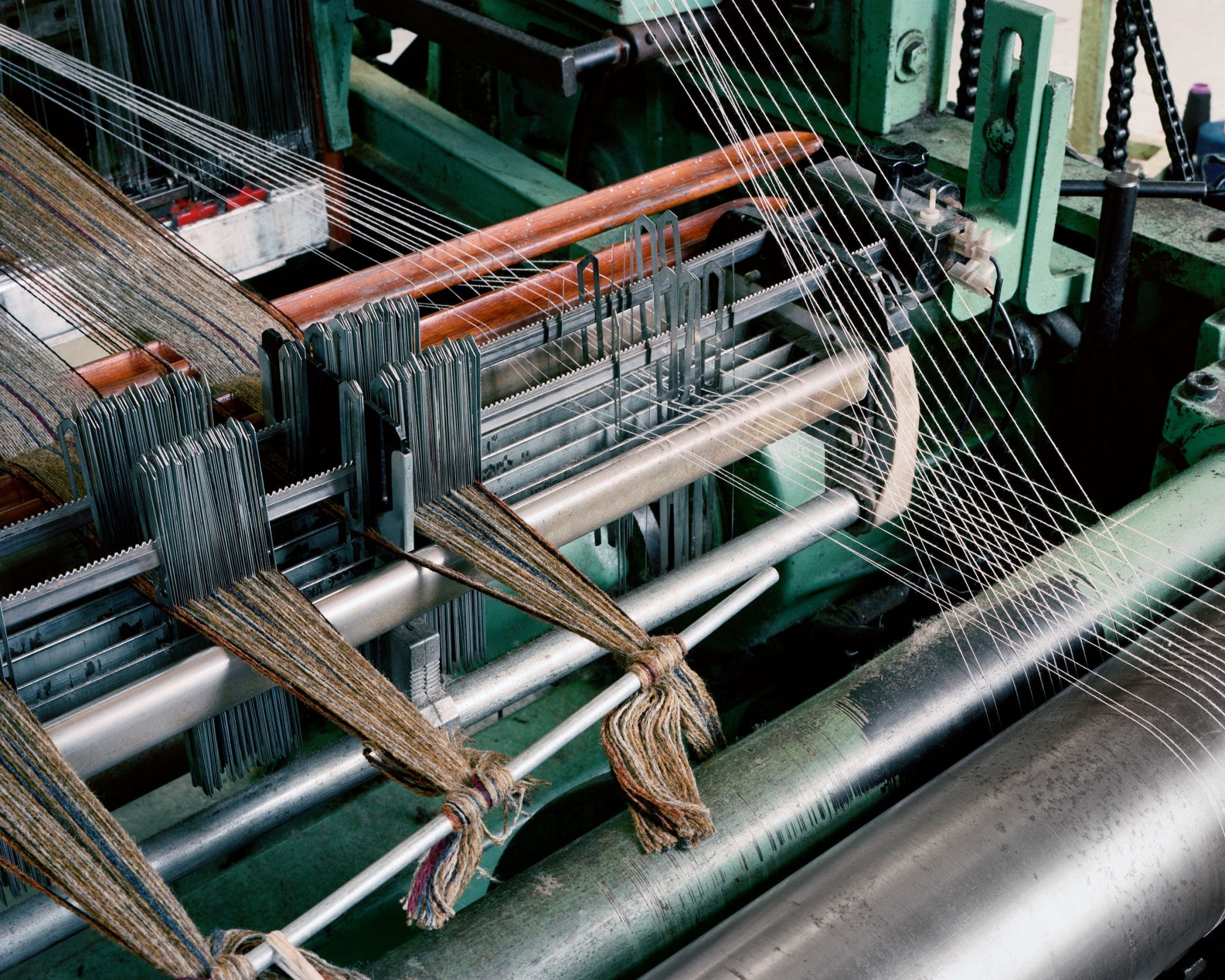
A loom between weaving beams
Here at The Peep we love seeing where some of our favourite creatives work. In fact, we love snooping around studios so much that we decided to turn it into a new series, say hello to ‘In the studio’.
Our first instalment features the London Cloth Company, the first micro-mill to open in London. When it opened in 2011, it had just one loom. Growing ever since, it is now one of the only places where you can see the entire history of mechanised weaving in one place as they have looms dating from 1870 to 1995.
Specialising in quality woven cloth, particularly woollens, the London Cloth company uses the same techniques that have not changed for decades. The majority of their work is weaving fabrics to order for clients all over the world, mainly for large fashion brands, but they often do small bespoke jobs for the film industry.
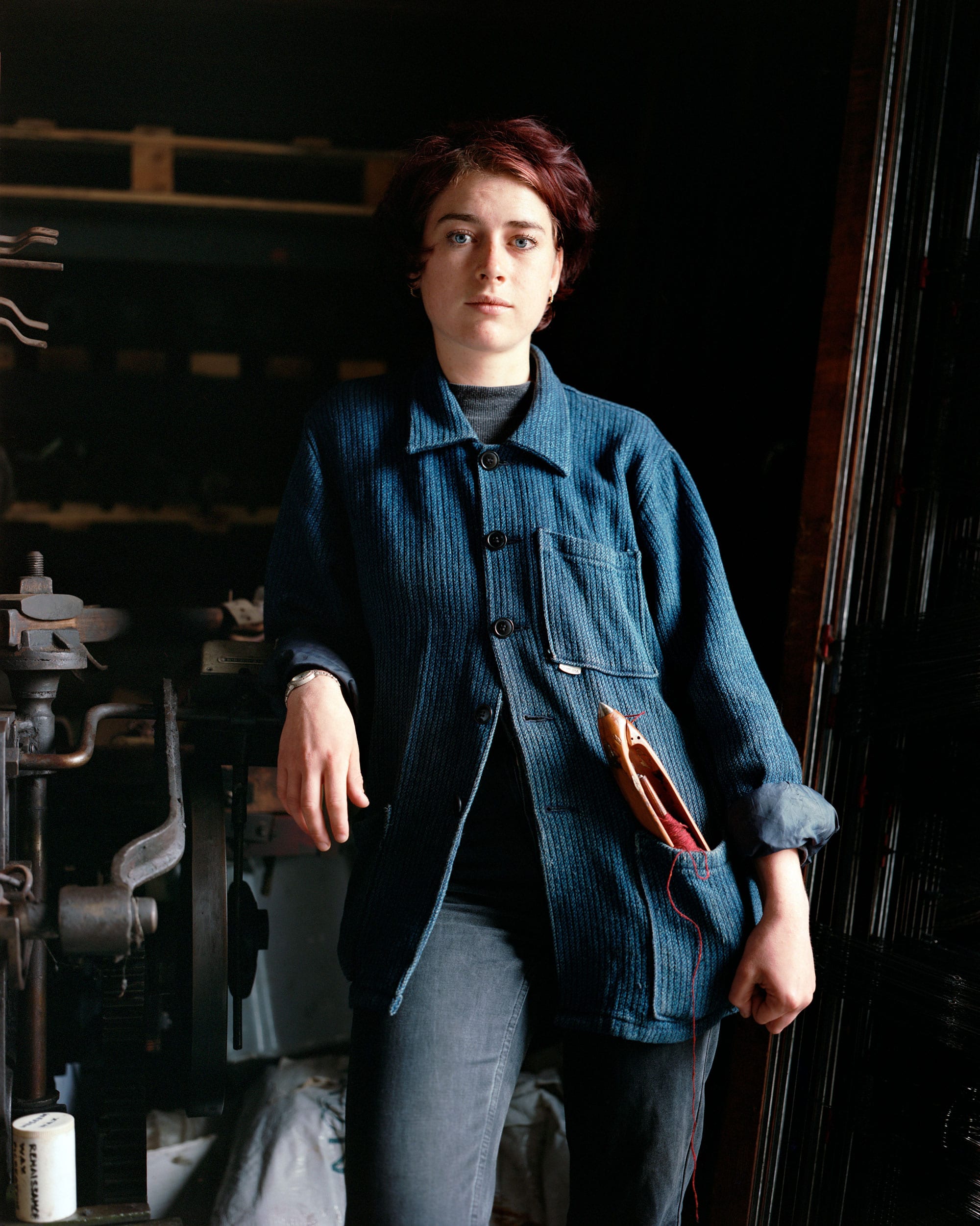
Beth, Weaver
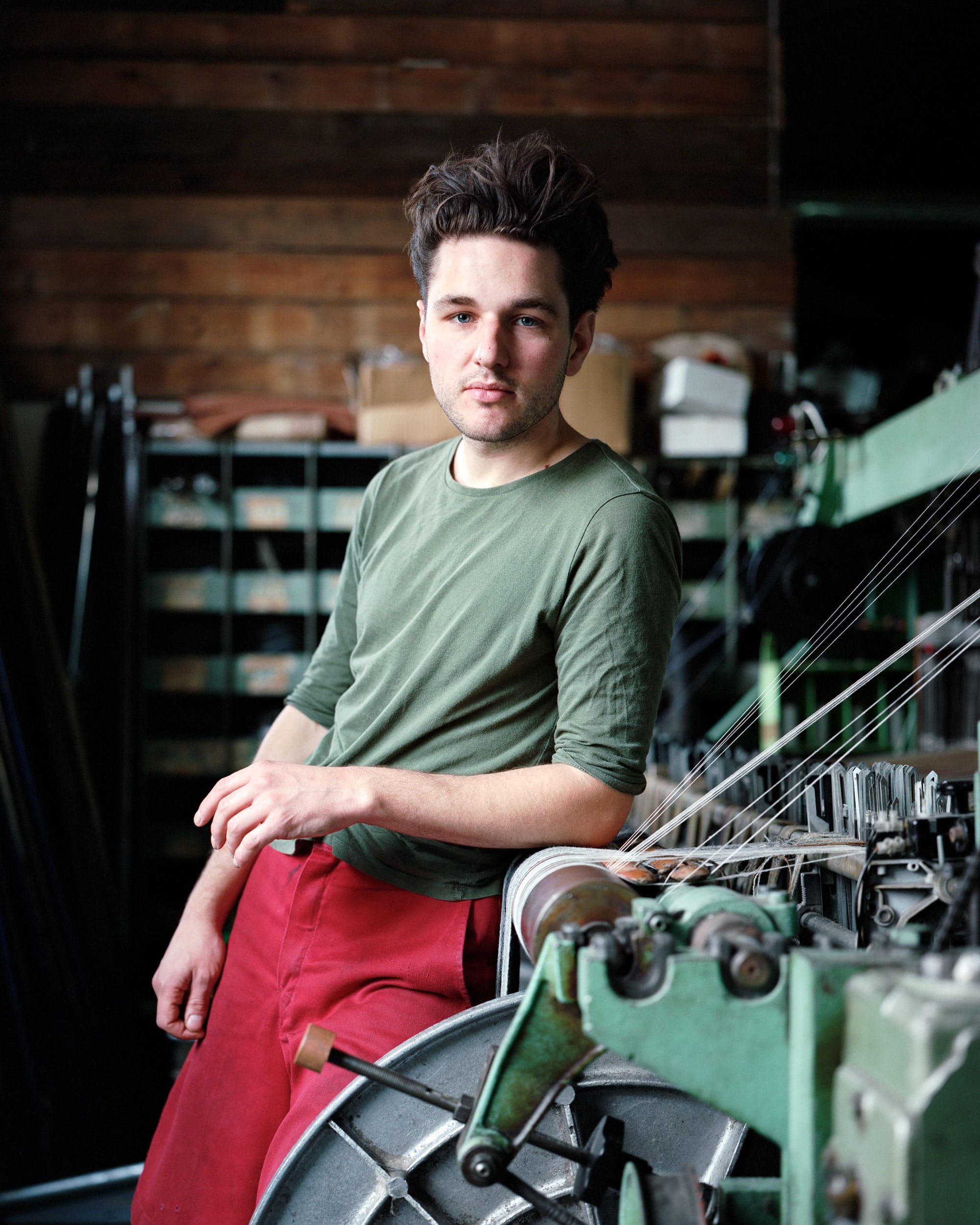
Daniel, Weaver
The London Cloth Company first came into being when Daniel rescued a rusting loom from an old barn. With no training of prior knowledge of wearing, Daniel learnt as he went along. Fully dismantling and reassembling machines that hadn’t been touched for 30 years, he quickly taught himself all the intricacies of the different parts.
A huge part of his work now is restoration of machinery to use in the mill but also working as a consultant for museums. ‘I have about 45 tons of machinery that I have rebuilt over the years, it is all in use and is constantly growing.’ says Daniel.
The mill has a dedicated manifesto of sustainability and zero to landfill policy. Everything in the mill is recycled in some way, meaning that they have not had rubbish collections for over two years. ‘I hate plastic.’ Daniel tells The Peep. ‘I use as much un-dyed British wool as possible which has a lower carbon footprint than the yarn bought in form overseas.’
For more information, visit the London Cloth Company’s website and Instagram.
All photography by Thom Atkinson. Visit his website here.
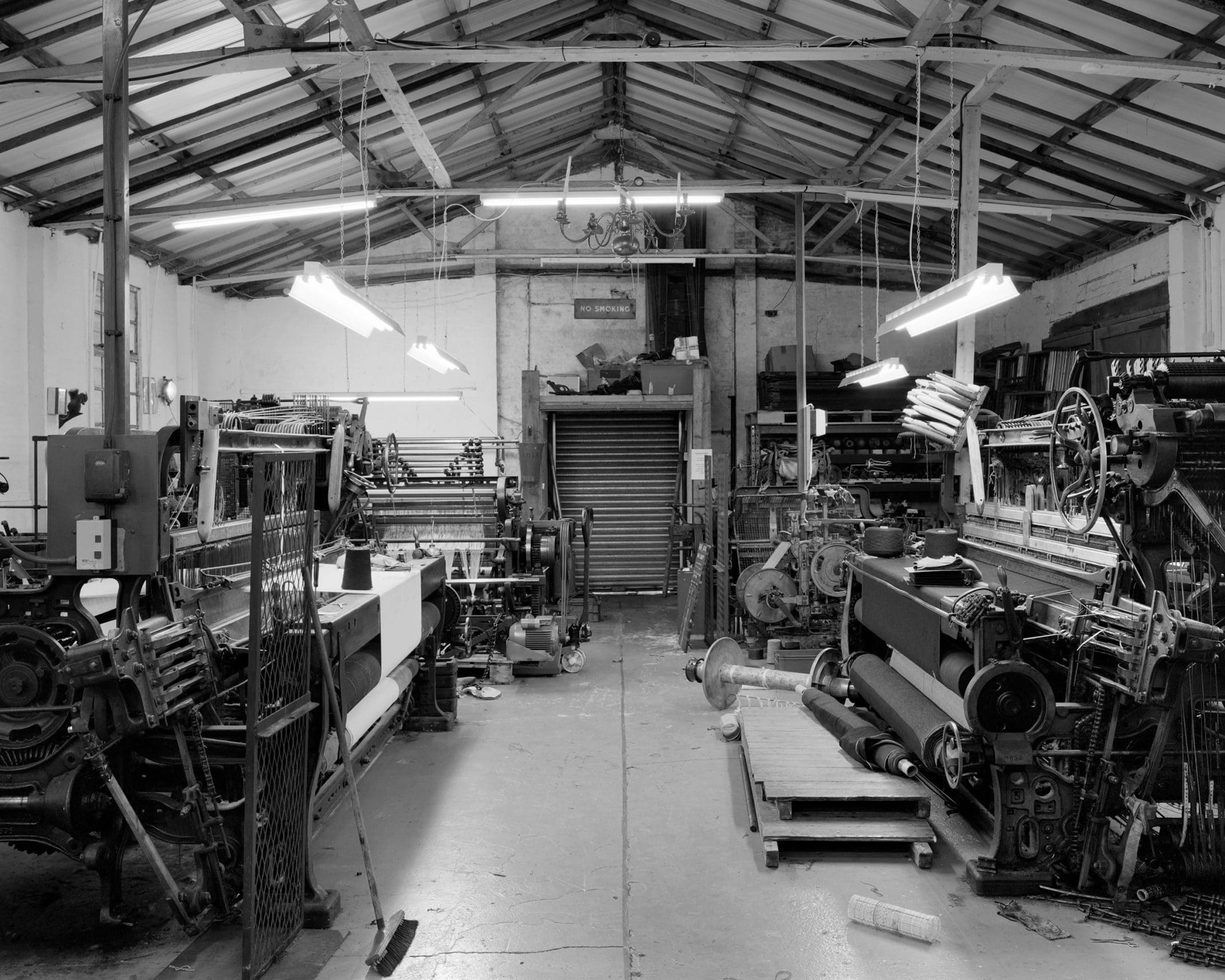
These two looms date from the very late 1800’s, they are 90″ x 16 shaft Dobcross Looms manufactured by Hutchinson Hollingsworth. They are semi automatic shuttle looms that are can run up to 7 colours.
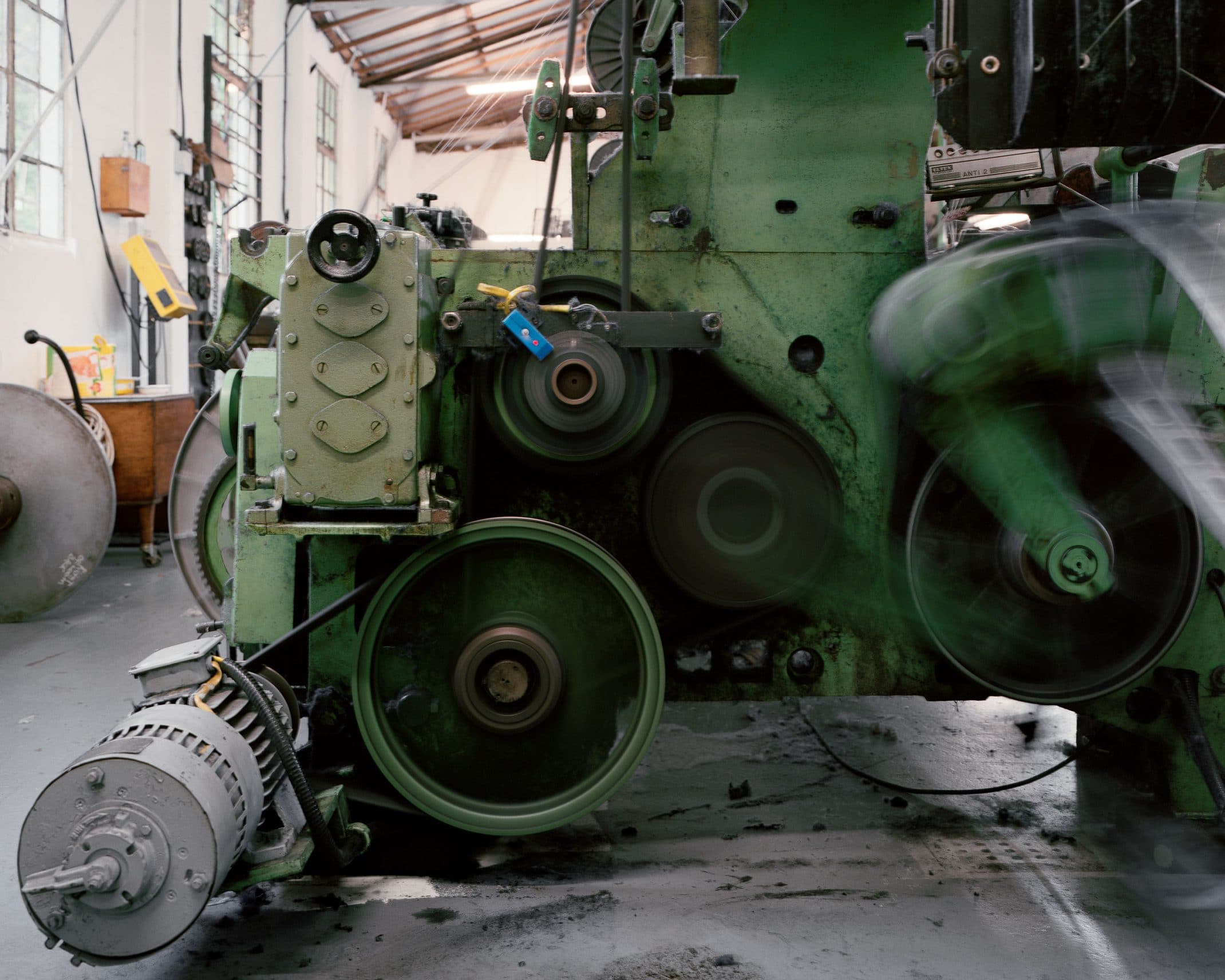
A 1974 Somet Ac2. This loom is archaic by modern standards, it is completely mechanical with no computer involved. It is massive but is very very versatile.
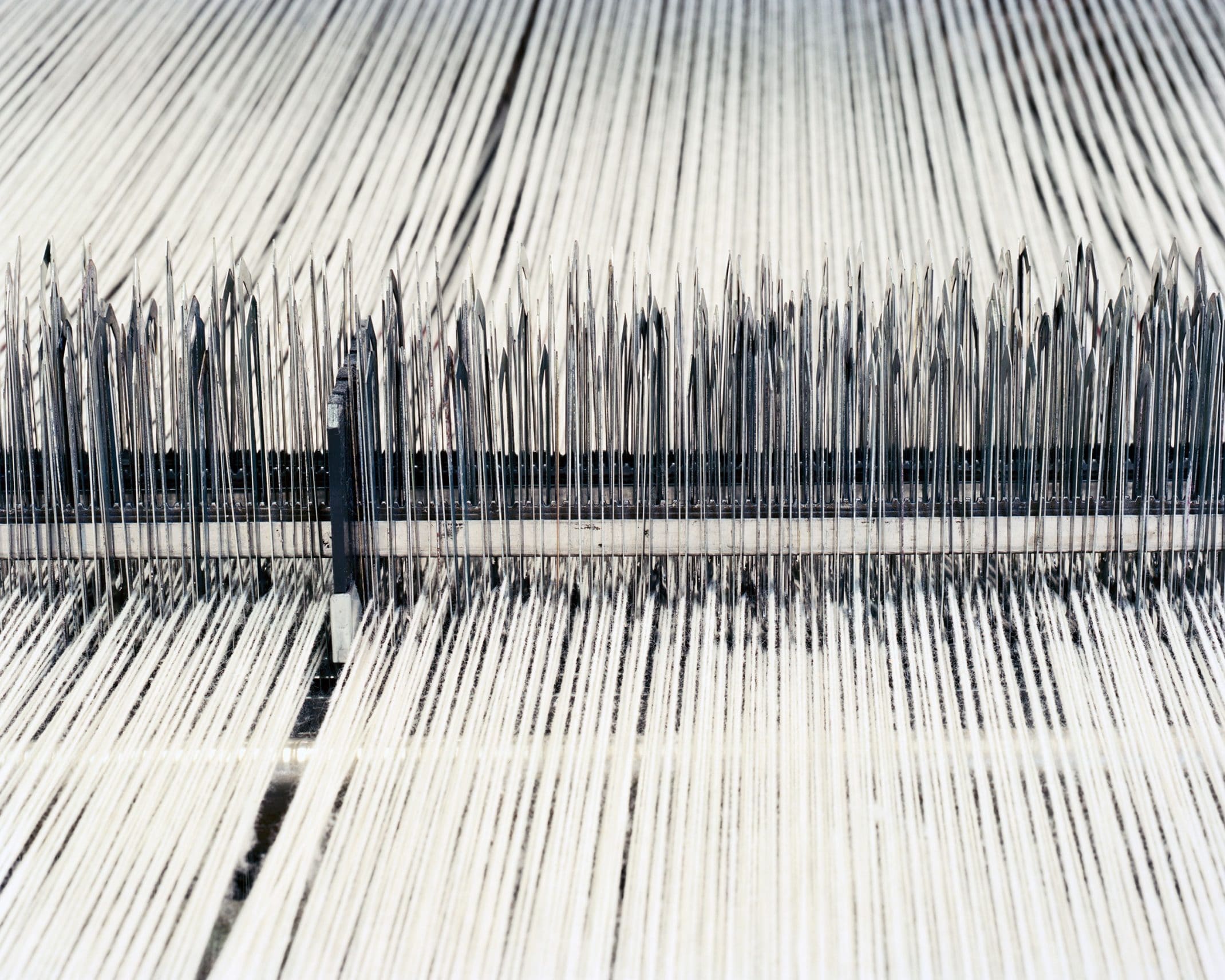
The droppers that sit on the warp yarns. If a yarn breaks the dropper falls and makes an electrical connection that tells the loom to stop weaving
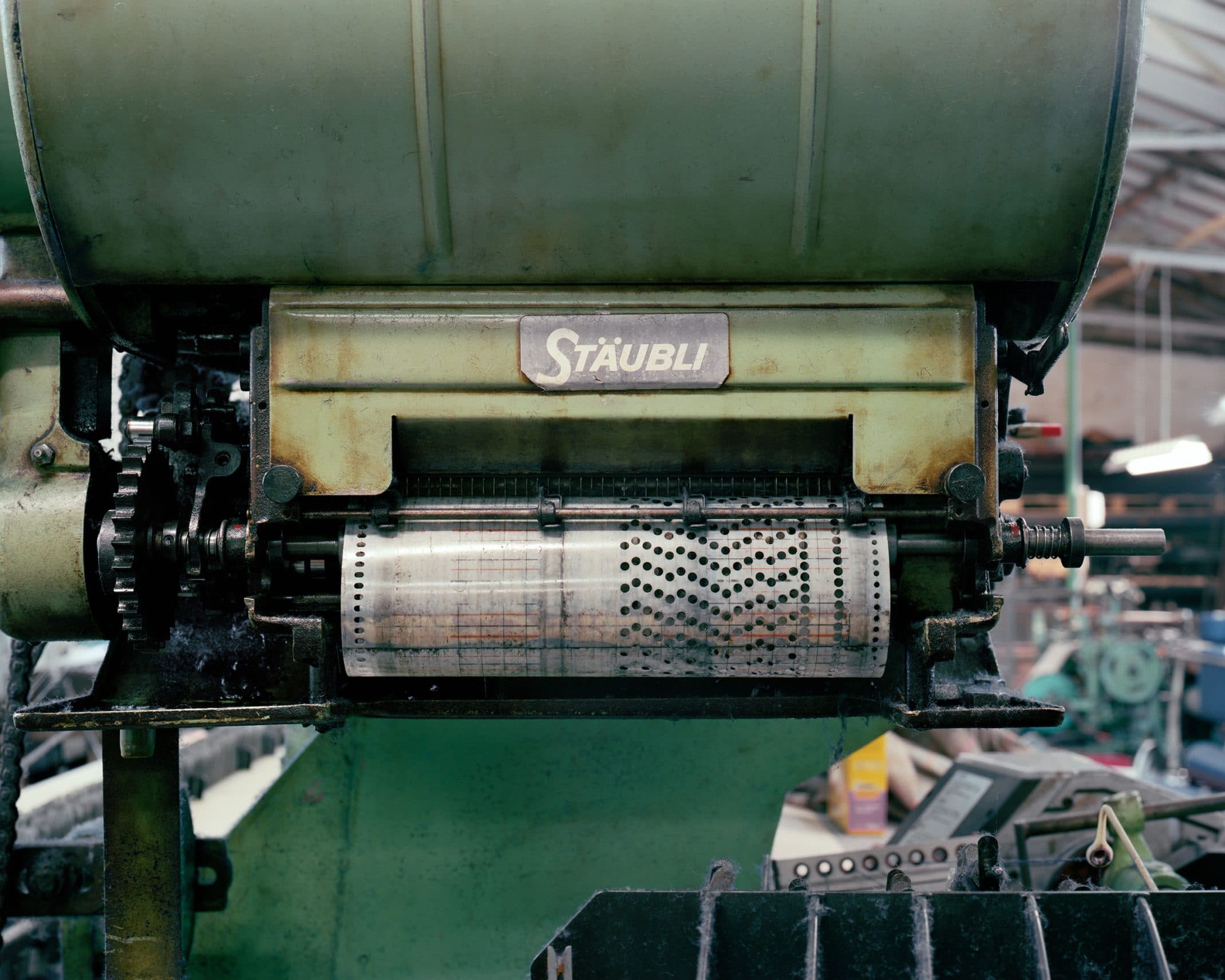
This is the mechanical computer called a Dobby that controls the loom. It works with punch cards that are cut in the mill. Each hole is read by one of 40 needles that tells the loom which shaft to lift or lower and what colour to insert.
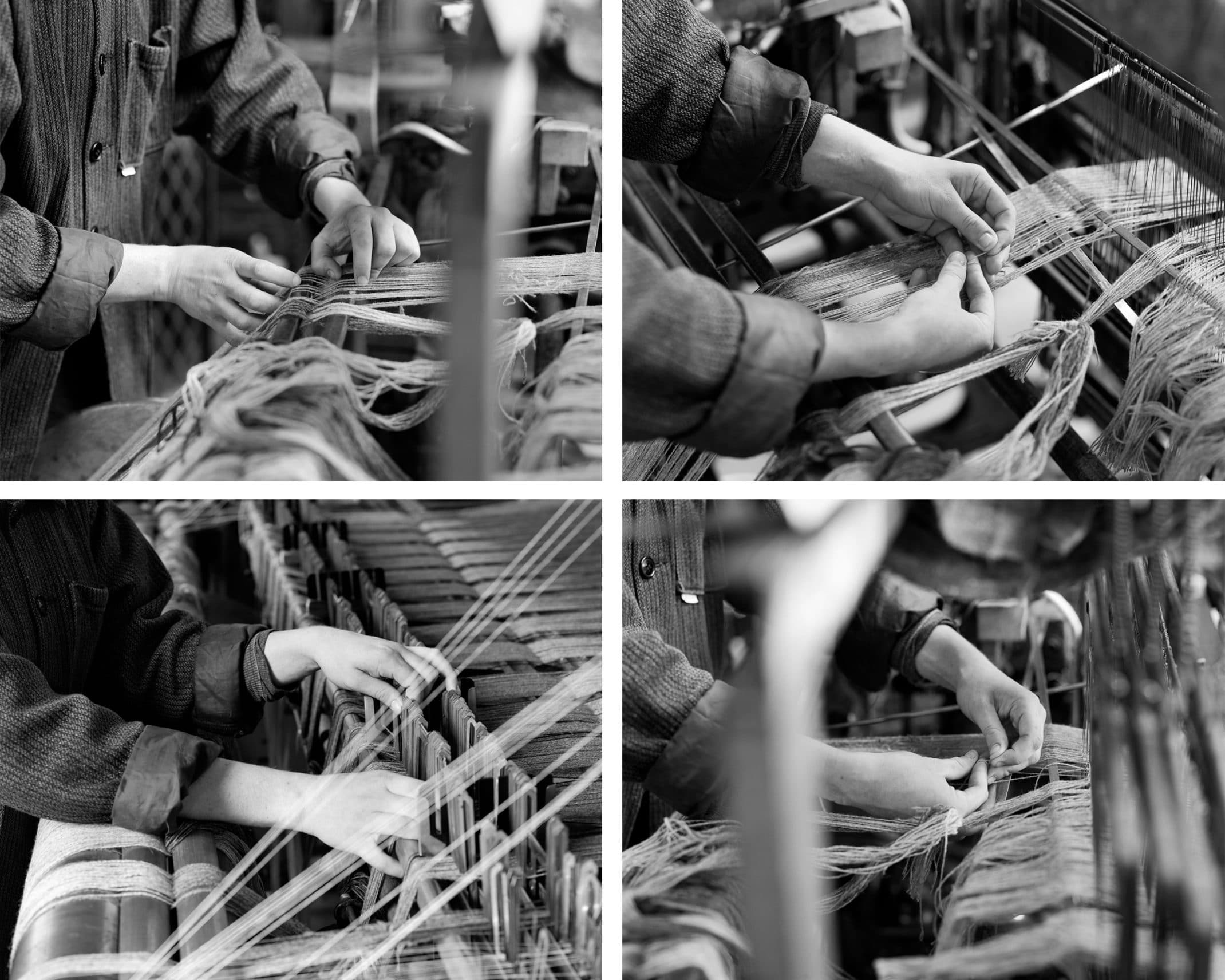
Hand tying in a fresh warp. Most of the warps have between 1400 and 2500 ends in them (ends = individual yarns). When starting a new cloth each end has to be hand tied to the old one, they need to match perfectly



